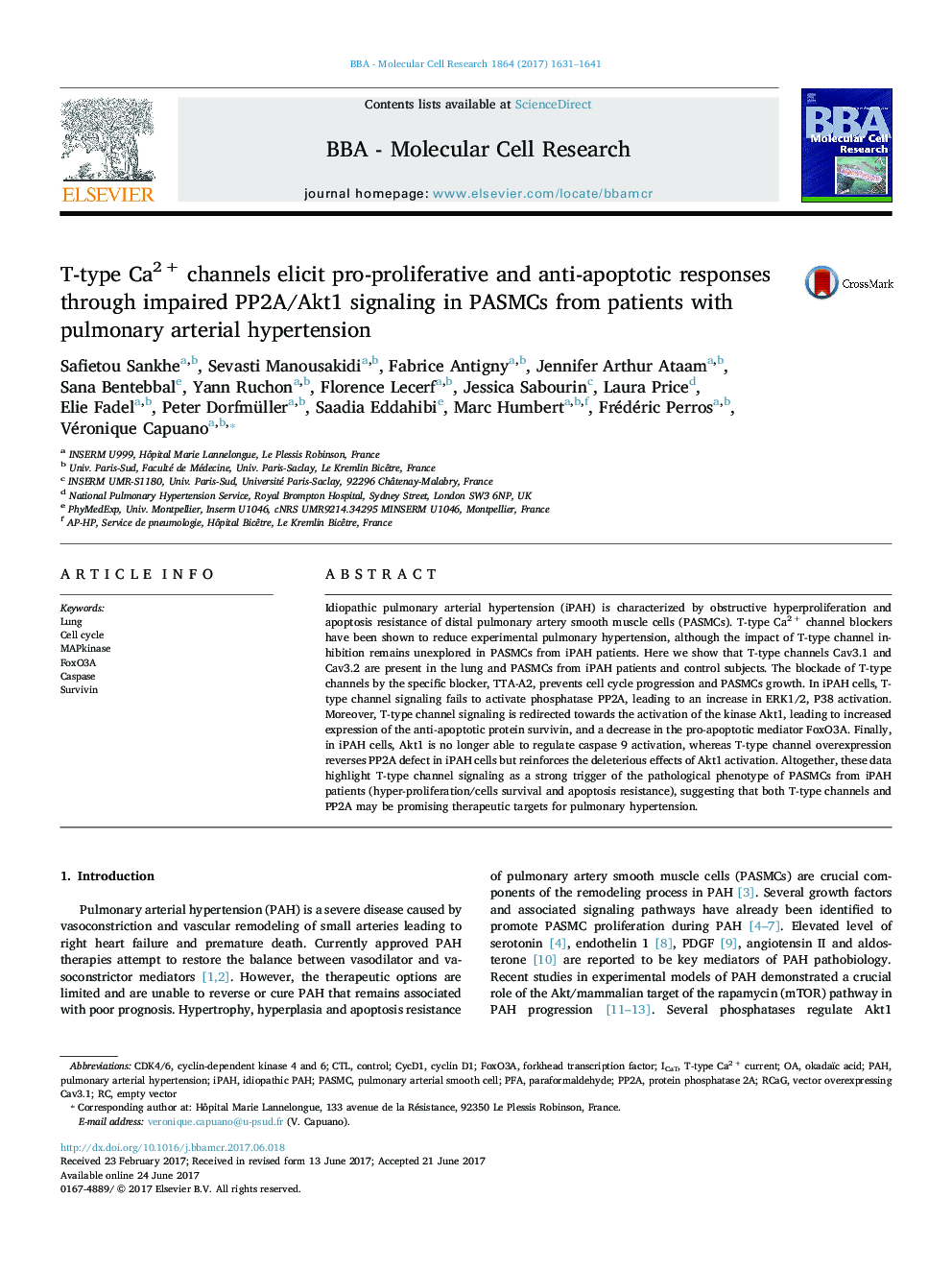| Article ID | Journal | Published Year | Pages | File Type |
|---|---|---|---|---|
| 5508824 | Biochimica et Biophysica Acta (BBA) - Molecular Cell Research | 2017 | 11 Pages |
â¢T-type Ca2 + channels are involved in Ca2 + homeostasis in human PASMCs.â¢In PASMCs from patients with pulmonary arterial hypertension (PAH), T-type Ca2 + channels signaling fail to activate PP2A and overactivate Akt1â¢Altered T-type Ca2 + channels signaling dysregulate activation of MAP kinases, survivin expression and FoxO3A stability in PAH PASMCsâ¢T-type Ca2 + channels signaling participate in the proliferative/apoptosis resistance phenotype of PASMCs from PAH patients
Idiopathic pulmonary arterial hypertension (iPAH) is characterized by obstructive hyperproliferation and apoptosis resistance of distal pulmonary artery smooth muscle cells (PASMCs). T-type Ca2Â + channel blockers have been shown to reduce experimental pulmonary hypertension, although the impact of T-type channel inhibition remains unexplored in PASMCs from iPAH patients. Here we show that T-type channels Cav3.1 and Cav3.2 are present in the lung and PASMCs from iPAH patients and control subjects. The blockade of T-type channels by the specific blocker, TTA-A2, prevents cell cycle progression and PASMCs growth. In iPAH cells, T-type channel signaling fails to activate phosphatase PP2A, leading to an increase in ERK1/2, P38 activation. Moreover, T-type channel signaling is redirected towards the activation of the kinase Akt1, leading to increased expression of the anti-apoptotic protein survivin, and a decrease in the pro-apoptotic mediator FoxO3A. Finally, in iPAH cells, Akt1 is no longer able to regulate caspase 9 activation, whereas T-type channel overexpression reverses PP2A defect in iPAH cells but reinforces the deleterious effects of Akt1 activation. Altogether, these data highlight T-type channel signaling as a strong trigger of the pathological phenotype of PASMCs from iPAH patients (hyper-proliferation/cells survival and apoptosis resistance), suggesting that both T-type channels and PP2A may be promising therapeutic targets for pulmonary hypertension.
